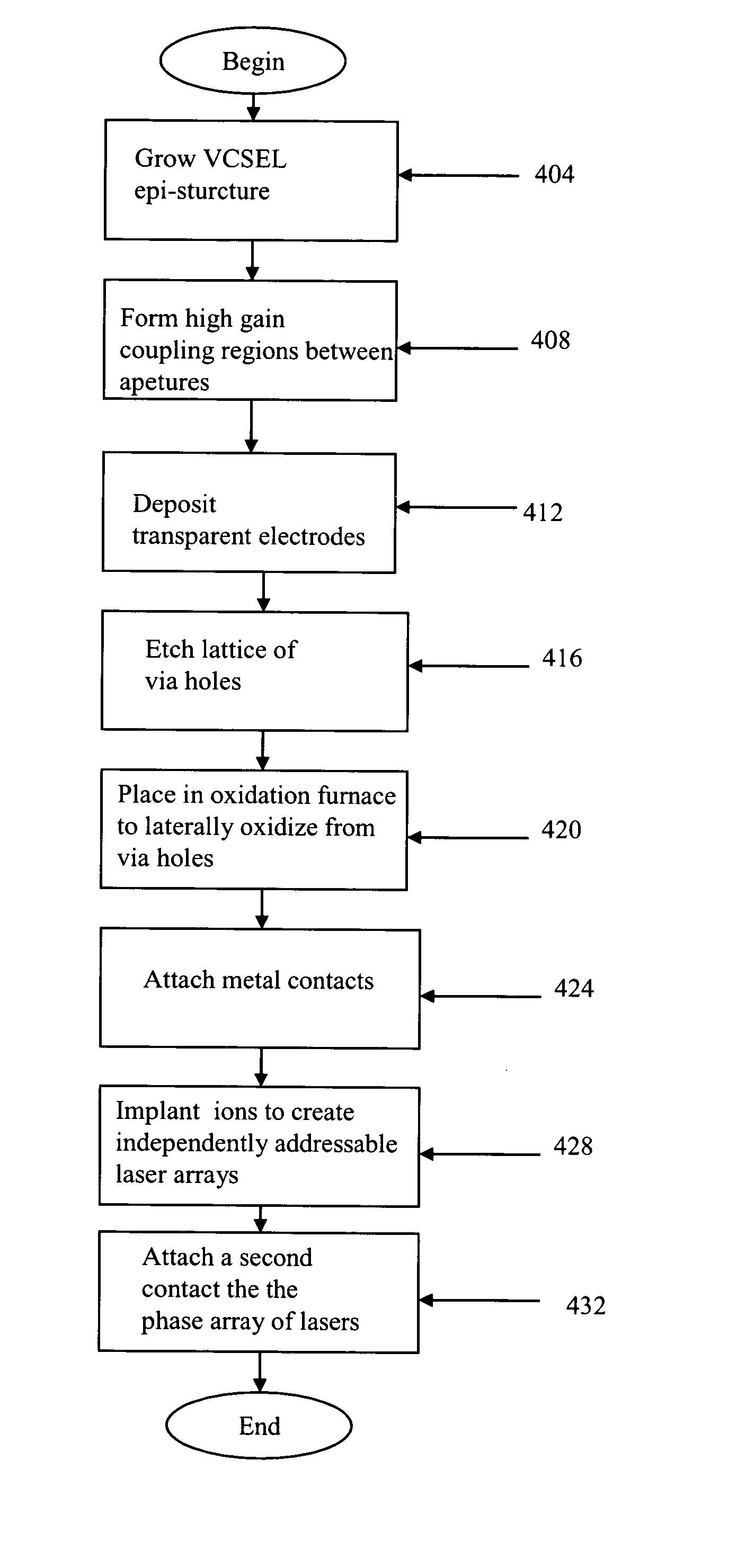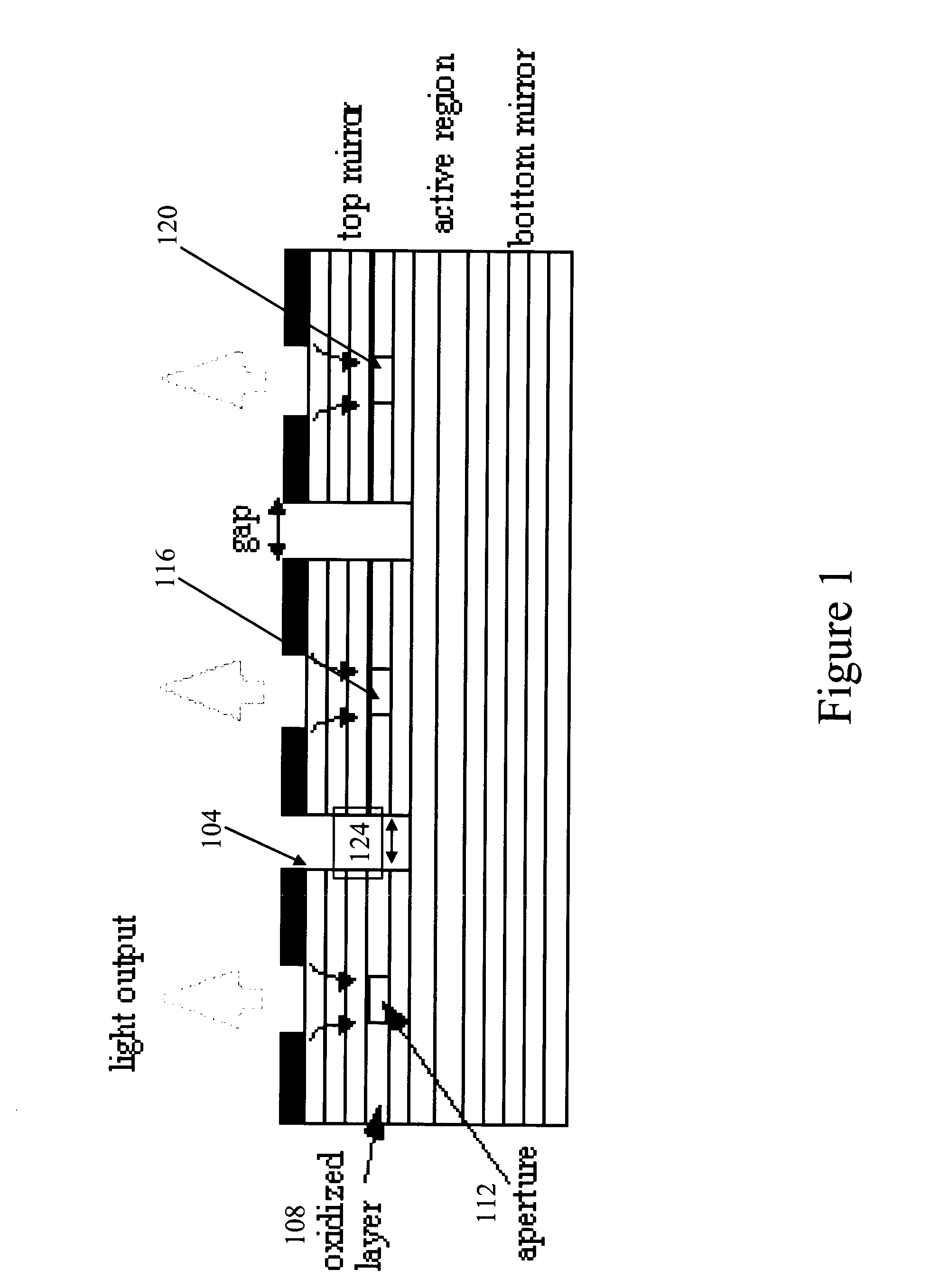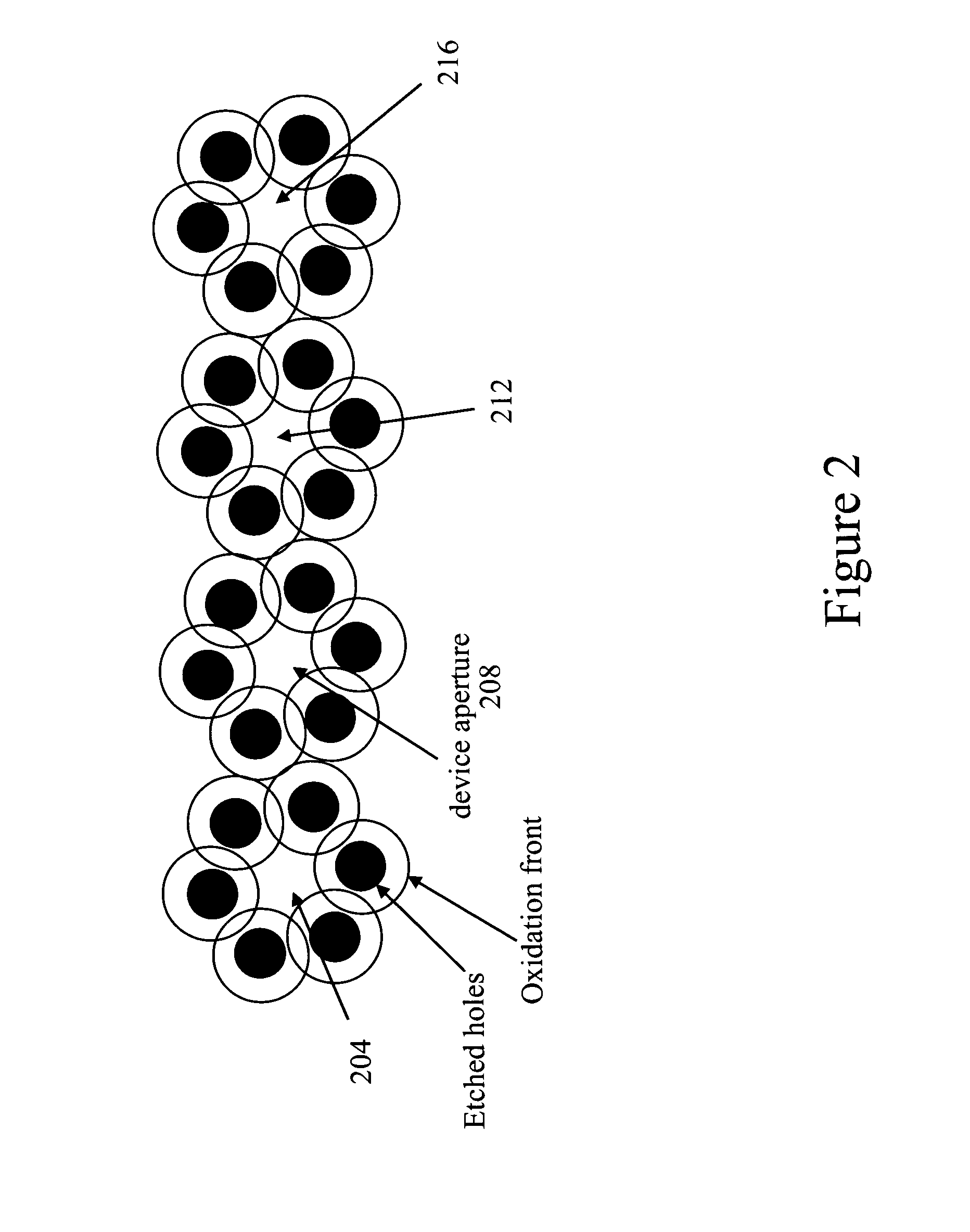Phase array oxide-confined VCSEL
a phase array and oxide-confined technology, applied in semiconductor lasers, laser details, electrical apparatus, etc., can solve the problems of limiting the light output power, single-mode devices with special shortcoming, and distinct spots that are unsuitable for communications and printing applications, and achieve enhanced mode coupling and high gain coupling
- Summary
- Abstract
- Description
- Claims
- Application Information
AI Technical Summary
Benefits of technology
Problems solved by technology
Method used
Image
Examples
Embodiment Construction
[0014] In the following detailed description, a method and system of forming an array of VCSELs using laterally oxidized apertures will be described. A common contact addresses several VCSELs simultaneously. In one embodiment of the invention, the VCSELs will be closely spaced and separated by thin, laterally oxidized regions designed to promote mode leakage between adjacent VCSELs. The mode leakage keeps the output of adjacent VCSELs in phase thereby allowing the output of these adjacent VCSELs to be combined into a coherent composite beam.
[0015]FIG. 1 shows a cross-sectional side view of an oxide-confined VCSEL mesa-structure with an etched pillar structure. Mesa sidewalls 104 provide access to buried aluminum-containing layers 108. Buried layer 108 is selectively oxidized to form laser apertures 112, 116, 120. In typical prior art VCSELs, the edge of the mesa completely surrounds the laser aperture such that an air gap 124 completely separates adjacent laser apertures 112 and 11...
PUM
 Login to View More
Login to View More Abstract
Description
Claims
Application Information
 Login to View More
Login to View More - R&D
- Intellectual Property
- Life Sciences
- Materials
- Tech Scout
- Unparalleled Data Quality
- Higher Quality Content
- 60% Fewer Hallucinations
Browse by: Latest US Patents, China's latest patents, Technical Efficacy Thesaurus, Application Domain, Technology Topic, Popular Technical Reports.
© 2025 PatSnap. All rights reserved.Legal|Privacy policy|Modern Slavery Act Transparency Statement|Sitemap|About US| Contact US: help@patsnap.com



